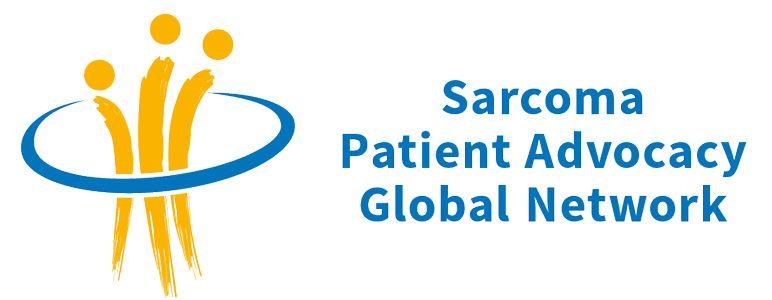Advocacy 2.0: The Evolving Role of Advocates in Rare Cancers


What do you say when someone asks you what a patient advocate does?
If you asked me, I would answer from my own experience: Advocates work with patients and their families. We support people and we share information with them.
In my 10 years as a GIST patient advocate, my role has mainly been to give support to patients – talking with them over Zoom calls, corresponding by email or on Facebook, or (in pre-pandemic times), meeting for coffee or chatting during an event hosted by our patient organization. I try to help people cope with their diagnosis and manage the side effects of treatment. My role has also involved writing texts for websites to educate patients and their families about the disease.
However, as important as these activities may be, there is so much more that we advocates can do.
I must say my eyes were opened when I read the editorial “The evolving role of patient advocates in rare cancers: opportunities and challenges“, by Ornella Gonzato and Alessandro Gronchi.
They detail a broad range of advocacy opportunities for patient advocates. It’s actually quite mind-boggling to learn about what some patient advocates are doing to help bring about progress with rare diseases. These opportunities go beyond the level of personal support and extend into the realm of research as well as into the public sphere.
The Rarity of Rare Cancers Makes an Active Role Necessary
Gonzato and Gronchi point out that the very fact that rare cancers are rare means that patients face greater challenges. As we know, these challenges include late or false diagnosis, delayed treatment, poor quality of care, lack of access to treatments, no adherence to clinical practice guidelines, too few specialist centers, too few trials, and lack of information about the disease, among others.
The authors frame this rarity as an opportunity – it is what drives patient advocates “to find new ways of acting and interacting among all the stakeholders”.
Many Opportunities for Partnerships with Stakeholders
Some advocates reading this blog will already be active in the public sphere: Perhaps you are involved in national campaigns to create public awareness of sarcoma in your country or to raise funds for sarcoma research.
Gonzato and Gronchi invite us to extend our reach even further. They describe advocacy work that engages with the stakeholders in every area related to the treatment and care of sarcoma patients: healthcare professionals, academics, researchers, pharmaceutical companies, regulators, and politicians.
Advocates can seize opportunities to become active partners of these stakeholders and play a crucial role in a range of processes.
What are some of these opportunities?
The editorial describes them in detail, providing specific information about the work that has been done and is yet to be accomplished. Very much worth reading!
Here, I’d like to briefly sketch five opportunities:
- Spearheading research initiatives
- Driving translational research forward
- Bringing the patient perspective to the entire clinical trial process
- Playing a role in drug development, designation, and approval
- Being involved in the organization and monitoring of healthcare services
1. Spearheading Research Initiatives
While fundraising to support basic research is of undeniable importance, patient advocates in rare cancers can also spearhead research initiatives. This is already happening: Nonprofit patient organizations are sponsoring promising initiatives that help to advance research. Some of these initiatives include the creation of disease models, such as cell lines and xenografts, which are important tools for understanding the biology of a disease and developing novel therapeutic approaches. Another example is biobanking, which involves pooling tumor specimens to make them accessible to researchers.
2. Driving Translational Research Forward
One important research aim is clearly the development of new drugs to treat sarcoma. Yet translational research -- which speeds up the transfer of knowledge from "bench to bedside" -- is also crucial. We know that the path leading all the way from a promising development in a research lab to an improved treatment of a patient is long, costly and full of risks. Patient advocates could play a role in shortening the “translational pipeline” by lobbying public officials to increase funding for translational research or by helping to create new frameworks for patient-private collaborations in the pharmaceutical industry.
3. Bringing the Patient Perspective to the Entire Clinical Trial Process
Further opportunities for advocacy present themselves all along the research continuum. Patient advocates of rare cancers represent the patient voice on research steering committees and advisory boards and in meetings of funding organizations. Advocates help set research priorities and can influence study design, eligibility criteria, as well as study procedures, for example. They even help to identify potential ethical issues in clinical trials and ensure that patient safety remains a priority. Importantly, patient advocates play an essential role in the success of clinical trials by helping to ensure that sufficient numbers of patients are recruited to participate in these trials. Rare disease trials can be difficult to conduct if patient recruitment falls short. Advocates can aid recruitment by educating patients and by making sure that information about trials and consent forms are written in reader-friendly language.
4. Playing a Role in Drug Development, Designation, and Approval
Advocates are bringing the patient perspective to the decision-making processes of pharmaceutical companies and regulators. They also sit in committees that make decisions about orphan drug designations, for example. In some countries, advocates have worked to have legislation passed that will help to accelerate the drug approval process and make it easier for patients to access drugs, something which is particularly necessary for those diseases with few available treatment options.
5. Being Involved in the Organization and Monitoring of Healthcare Services
In order to ensure the quality of the healthcare services provided to sarcoma patients, patient advocates provide recommendations to healthcare policymakers and also help to define essential requirements for good quality care. Advocates are involved in establishing sarcoma centers of excellence and promoting a multidisciplinary approach to diagnosis and treatment. They also monitor the compliance of these healthcare services with quality requirements.
Expanding Our Role as Advocates
Gonzato and Gronchi conclude that working in partnership with all stakeholders is the way forward.
I think a broader understanding of our evolving role will help us to recognize – and seize – the new opportunities of “Advocacy 2.0”.
What are some advocacy opportunities in your country? Let us know.
Authors: Amy Bruno-Lindner and Ornella Gonzato
Photo credit: Photo by Jason Goodman on Unsplash
